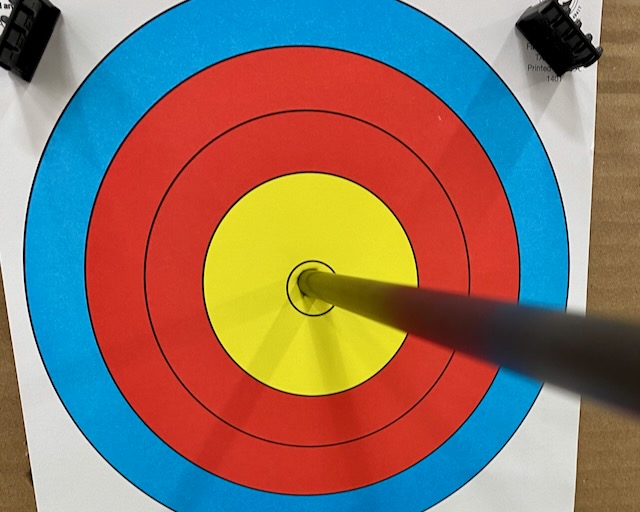Comparing arrows for indoor USA Archery competition
After a week of arrow testing I’ve settled on the Easton SuperDrive 23 shaft (325 spine) cut to 30″ with 180-gr Competition Archery Products Pro Points Pins and Flex-Fletch FFP-360 vanes for next weekend’s USA Archery 55th Indoor Nationals competition. After a good number of practice rounds, those arrows had the highest average score.
Here are the builds I tested:
- Easton 2315 (30″ and 180-gr points)
- Easton 2315 (29″ and 200-gr points)
- SuperDrive 23 (29.5″ with 180-gr points)
- SuperDrive 23 (30″ with 180-gr points)
For anyone else who is interested in my results, it’s important to know that I’m shooting 58 pounds of draw weight and a 30.75″ draw length. Your results would vary if your setup is very different from mine.
The two best builds were the 29″ 2315s and the 30″ SuperDrive 23s with similar average scores, but I went with the SuperDrives for a very practical reason: in the event that my arrow falls off my blade rest while drawing my bow, the 29″ shafts are too short for me to reach with my index finger to put back on the blade. I don’t want to take the extra time to let down and draw back again when there’s a shot clock running.

So is the 30″ SuperDrive build the most “forgiving”? I’ve taken enough statistics courses to know that I would need to shoot a lot more rounds to be confident that the relatively small differences among those arrows isn’t swamped by the comparatively large differences in my shooting from arrow to arrow, round to round, and day to day. On the tiny inner-10 scoring for compound archers at USA Archery events where we’re limited to smaller 23-diameter arrows, I don’t expect a forgiving setup to rescue a truly bad shot like it might allow me to catch a ten in a Vegas round. But a good setup should definitely shoot higher scores and might save my bacon on a less-than-perfect, but not awful shot.
The next step is to build a few more of the SuperDrive arrows so I have plenty in my quiver. Once I have them all built I’ll shoot them all through paper and turn nocks until I get consistent results across the entire batch. Then I’ll number them and shoot some more rounds watching for any specific arrows that aren’t scoring as well as the others.